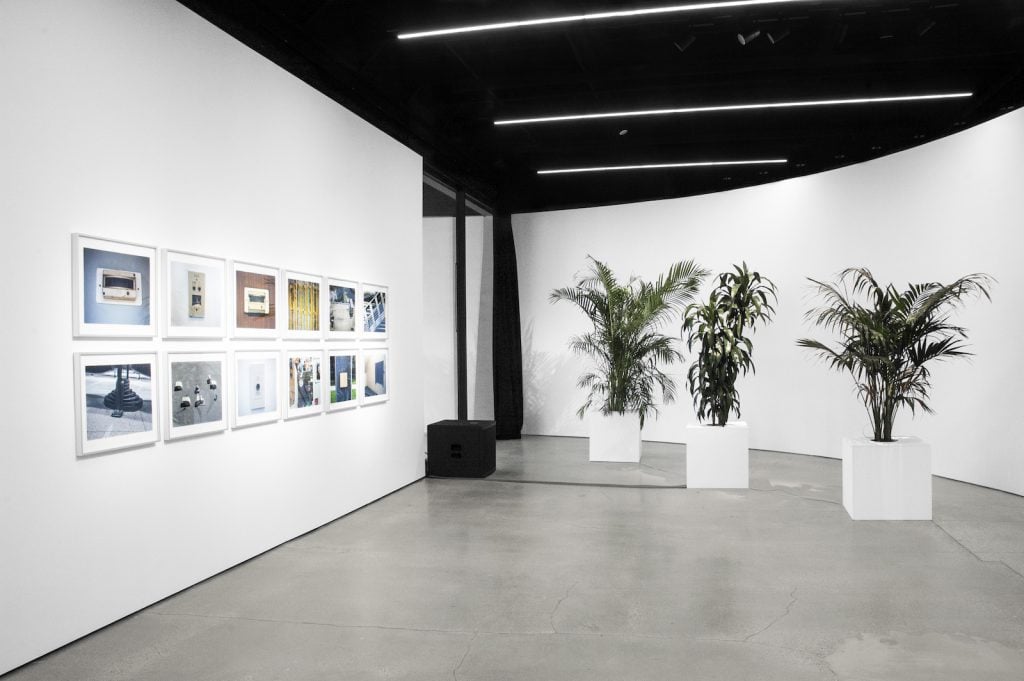Art & Tech
This Artist Wanted to Teach Aliens About Life on Earth. So, She Teamed Up With NASA Scientists to Send an Artwork Into Outer Space
Julia Christensen partnered with scientists and engineers at NASA’s Jet Propulsion Laboratory.

Julia Christensen partnered with scientists and engineers at NASA’s Jet Propulsion Laboratory.

If there is intelligent life on Proxima b, an exoplanet orbiting the star Alpha Centauri, 4.25 light years away from Earth, those creatures might soon learn a little bit about life here via an artwork created by Julia Christensen.
The artist has been working with scientists at NASA’s Jet Propulsion Laboratory, which is trying to send a craft to conduct a reconnaissance fly-by there. It will carry Christensen’s artwork, The Tree of Life, and beam it down to whatever little green men might be there (themselves, no doubt, busily building monoliths to send to Earth).
“For the last several years, I have been making work about upgrade culture,” said Christensen, referring to the widespread habit of always upgrading our devices and thereby creating copious waste.
The artist, who is chair of the studio art department at Ohio’s Oberlin College, came to work with NASA scientist Anthony Freeman under the auspices of a fellowship organized by the Los Angeles County Museum of Art’s Art + Technology lab. Freeman is concerned with upgrade culture in his own field, and is, with a team of scientists and engineers, working to design a craft that could travel to Proxima b.
Discovered in 2016, the closest known planet to our solar system rests in the “Goldilocks zone” from its own sun, meaning Proxima b might have a temperate enough climate to be habitable.
“If this spacecraft could travel at a 10th of the speed of light, it would take 42 years to reach its destination,” said Christensen, adding that we’re not quite there in terms of speed yet. “So we have 40 years until we arrive at the technology to go that fast. How do we develop technology now that will function 100 years into the future? What kind of data is it going to send back to us in 2111?”

“Julia Christensen: Upgrade Available,” Mullin Gallery, ArtCenter College of Design. Courtesy of Dana Mannix.
As far as what kind of information this craft will transmit to those on Proxima b, that’s where Christensen’s work comes in. The Tree of Life riffs on the Golden Record, which NASA sent out with Voyager in 1977, an actual album etched with music, greetings in various languages, and photos of life on Earth, there for alien life forms to find. But rather than the songs of humans, this project will bear the songs of trees.
Yes, trees. Christensen and the engineers at the Jet Propulsion Laboratory are working on building a toaster-size, near-Earth satellite (a device known generically as a CubeSat) that can remain functional for 200 years, and that will gather information from trees outfitted with devices allowing them to communicate with the satellite. They hope to develop the device within the next few years, with a budget of under $1 million.
“The trees will have a conversation with the CubeSat,” says Christensen. “They’ll transmit information on their lives and how they’re doing to the CubeSat, and the CubeSat will send data about how it’s doing. That dialogue will be translated into sonic frequencies that will become a song. That’s what will be embedded on the spacecraft headed to Proxima b.”
She’s presenting The Tree of Life in prototype at her current show “Julia Christensen: Upgrade Available,” at Pasadena’s ArtCenter College of Art and Design, through March 28. Also included are works in various mediums that explore trash and how it gains or loses meaning in its travels through the world after it leaves us. There are, for example, photos of discarded batteries, keyboard parts, television parts and the like from a market in Mustafabad, India.
If you’ve ever gotten rid of an old archive of 35-millimeter slides, you may find your old vacation snaps on the wall; Christensen buys up strangers’ slides on eBay and makes drawings based on them. And there are photos of antique media like VHS in archives like those you’d find in many museums, another place where one man’s trash can become another’s treasure.
Christensen’s explorations of upgrade culture have gone on view at institutions like LACMA as well as the Carnegie Museum of Art in Pittsburgh and the Walker Art Center in Minneapolis. But for the artist, it’s the space-bound project that stands out from the rest of her career. The folks she met at the Jet Propulsion Lab, she said, are true visionaries.
“We often talk about how there’s a place where science and art meet on the plane of existential questions,” she says. “When you get to the point of trying to imagine how humanity can explore the next star system over, you get to imaginative questions. It’s a very visionary mood. This has been one of the most inspiring and expansive projects of my life.”